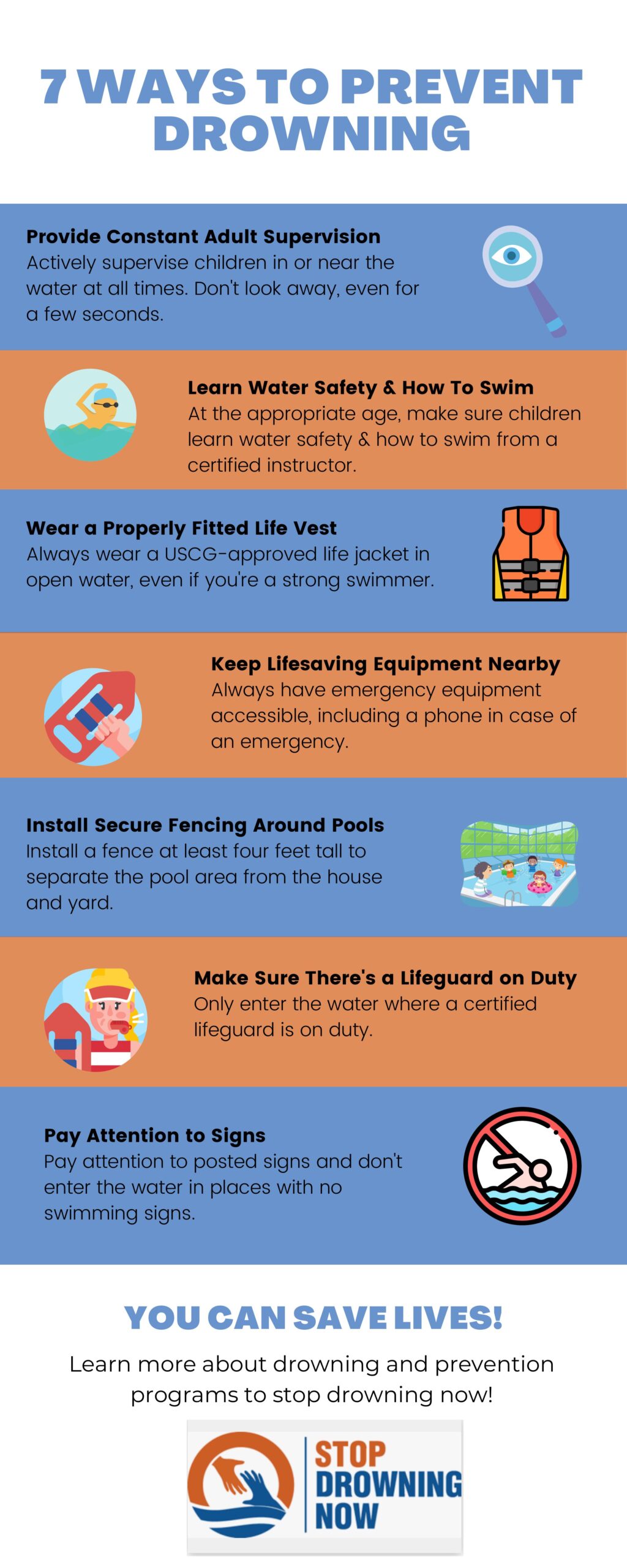Water activities are among the most popular forms of recreation, especially in warm weather. However, water activities come with risks. According to the Centers for Disease Control and Prevention (CDC), drowning is the leading cause of injury death for children one to four and the second leading cause of injury death for children five to fourteen.
Lifeguards monitor and supervise swimming areas — pools, water parks, and beaches — and are responsible for the safety of people enjoying the water by preventing accidents and responding to accidents when they occur.
Lifeguards are trained professionals who play a crucial role in ensuring the safety of people in and around the water. That’s why people are advised not to swim in bodies of water without lifeguards. Continue reading to learn about the importance of lifeguards in water safety and their roles and responsibilities.
The Roles and Responsibilities of Lifeguards
Lifeguards are trained and certified to perform their duties effectively. They undergo rigorous training, including swimming and rescue techniques, first aid, and cardiopulmonary resuscitation (CPR). They must also remain vigilant and focused for extended periods, even in challenging conditions like high waves or extreme heat.
Surveillance
Lifeguards are responsible for closely monitoring swimmers to identify potential hazards and respond quickly if an emergency occurs.
Prevention
Lifeguards are trained to prevent accidents before they happen. They do this by educating swimmers on the rules and regulations of the pool or beach, identifying potential risks, and taking action to eliminate them.
Response and Rescue
Despite the best preventative measures, accidents and emergencies can still occur. Lifeguards are trained to respond quickly and efficiently to various water-related emergencies, including drowning, spinal injuries, and water-related illnesses. They have the necessary rescue techniques, first aid, and CPR skills to provide immediate care and assistance.
Maintenance
Lifeguards are responsible for maintaining a safe environment for swimmers. They monitor water quality, ensure safety equipment is in good condition, and keep the area free from danger.
The Impact of Lifeguards on Water Safety
The presence of lifeguards significantly enhances the safety of aquatic environments. For example, lifeguarded beaches have a significantly lower drowning rate than unguarded beaches. In addition, the American Red Cross estimates that certified lifeguards help save thousands of lives each year, making them invaluable assets in maintaining water safety.
Lifeguards contribute to water safety through their direct actions and foster a culture of safety and awareness among swimmers. They serve as educators, sharing vital knowledge and skills with the public to help them make informed decisions and adopt safer practices in and around water.
The Challenges Faced by Lifeguards
Despite their important role, lifeguards face many challenges. One of the biggest is dealing with human behavior. For example, many accidents occur because swimmers ignore safety rules, swim in off-limit areas, or overestimate their swimming abilities. Environmental factors are another challenge. For example, weather conditions or wave currents mean lifeguards must be able to assess these quickly and adjust their surveillance and rescue techniques accordingly.
Constant Supervision Is Necessary, Even in the Presence of Lifeguards
Fortunately, professional lifeguards help keep people safe in and around water. However, it’s important to remember that lifeguards are responsible for multiple people, and constant supervision is the best drowning prevention.
A supervising adult with swimming skills should always provide constant touch for children anytime they’re in or around water — meaning they should always be within arm’s length of the child. If, for some reason, you need to get out of the water, take the child with you, even if lifeguards are present.
Working Together To Prevent Drowning
Enjoying a day at the beach, pool, or lake can be fun and relaxing, but only if everyone’s safe. Using the five layers of protection is an excellent way to ensure that water activities don’t end in tragedy.
Drowning is preventable. Lifeguards and constant adult supervision are the most critical step to preventing drowning. Together, we can end drowning and save lives and heartache! Take our Water Safety Challenge to measure your family’s water safety competence, and help us provide water safety outreach to schools and community groups to keep all kids safe.

